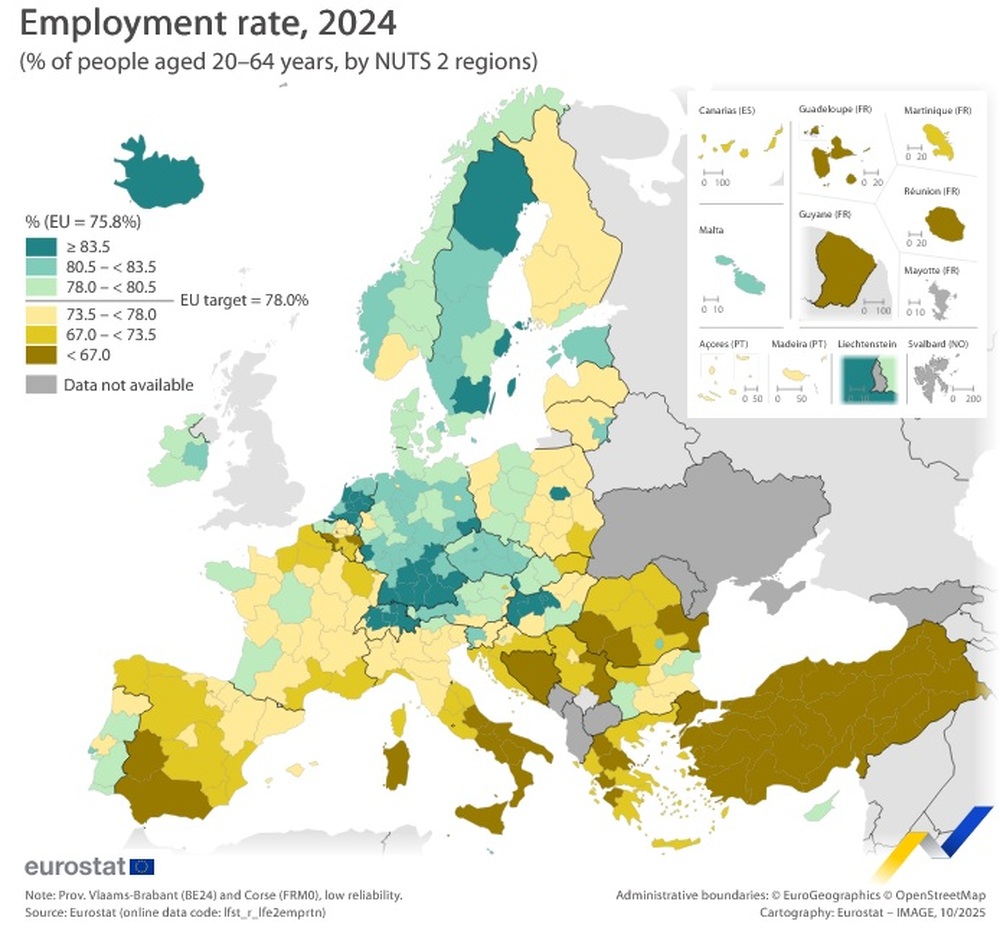site.btaEmployment Rate in the EU and Bulgaria Increased in 2024, According to Eurostat


The EU’s employment rate was at a historical high of 75.8% in 2024, 2.2 points below the 78% target set by the European Pillar of Social Rights Action Plan for 2030 according to data released by Eurostat on Monday.
The highest employment rate among EU regions in 2024 was recorded in the Finnish Aland Islands, where 86.4% of the working-age population was employed, followed by the capital region around Warsaw, Poland (86.2%), the area around the Slovak capital Bratislava (85.4%), the Hungarian capital region of Budapest (85.3%), the Dutch region of Utrecht (85.3%), and the Czech capital region of Prague (85.1%).
Almost half (46.5 %) of all regions (113 out of 243 regions) in the EU had an employment rate equal to or above 78 % - the EU's employment target for 2030.
At the other end of the scale, in two regions in southern Italy, less than half of the population was employed: in Calabria (48.5%) and Campania (49.4 %), while in Sicily just over half of the population was employed (50.7%).
In Bulgaria, employment in 2024 reached 76.8% of the working-age population aged between 16 and 64. This represents an increase of 0.6% compared to the employment rate in 2023 (76.2%).
The southwestern region, including the capital Sofia, had the highest employment rate in Bulgaria in 2024 – 79.9%, which, however, represents a decrease of 0.6% age points compared to 2023 (80.5 %).
The lowest employment rate was recorded in the northwestern region of the country – 69.3%, which represents an increase of 2.1% compared to the level in 2023.
Many of the regions with relatively low employment rates were rural, sparsely populated, or regions on the periphery of the EU. This trend is particularly evident in the southern regions of Spain and Italy, much of Greece, some regions of Romania, and the outermost regions of France.
Another group of regions with relatively low employment rates are former industrial centers that have not adapted economically. Some of them have experienced the negative impact of globalization on the traditional sectors of their economies (such as coal mining, steel production or textiles). Examples include a group of regions stretching from north-eastern France to the Belgian region of Wallonia.
/RY/
news.modal.header
news.modal.text